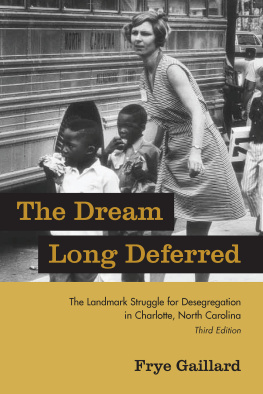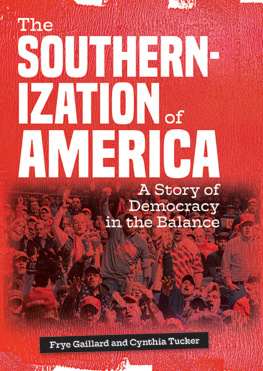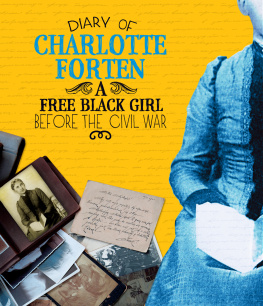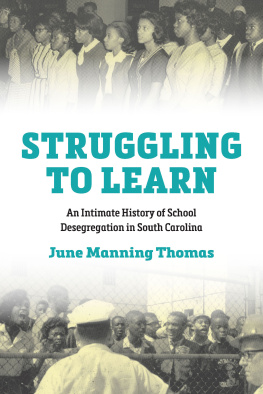Frye Gaillard - The Dream Long Deferred: The Landmark Struggle for Desegregation in Charlotte, North Carolina
Here you can read online Frye Gaillard - The Dream Long Deferred: The Landmark Struggle for Desegregation in Charlotte, North Carolina full text of the book (entire story) in english for free. Download pdf and epub, get meaning, cover and reviews about this ebook. year: 2022, publisher: University of South Carolina Press, genre: Politics. Description of the work, (preface) as well as reviews are available. Best literature library LitArk.com created for fans of good reading and offers a wide selection of genres:
Romance novel
Science fiction
Adventure
Detective
Science
History
Home and family
Prose
Art
Politics
Computer
Non-fiction
Religion
Business
Children
Humor
Choose a favorite category and find really read worthwhile books. Enjoy immersion in the world of imagination, feel the emotions of the characters or learn something new for yourself, make an fascinating discovery.
- Book:The Dream Long Deferred: The Landmark Struggle for Desegregation in Charlotte, North Carolina
- Author:
- Publisher:University of South Carolina Press
- Genre:
- Year:2022
- Rating:4 / 5
- Favourites:Add to favourites
- Your mark:
The Dream Long Deferred: The Landmark Struggle for Desegregation in Charlotte, North Carolina: summary, description and annotation
We offer to read an annotation, description, summary or preface (depends on what the author of the book "The Dream Long Deferred: The Landmark Struggle for Desegregation in Charlotte, North Carolina" wrote himself). If you haven't found the necessary information about the book — write in the comments, we will try to find it.
A fifty-year history of one communitys battles with race in public education
The Dream Long Deferred tells the fifty-year story of the landmark struggle for desegregation in Charlotte, North Carolina, and the present state of the citys public school system. Award-winning writer Frye Gaillard, who covered school integration for the Charlotte Observer, updates his earlier 1988 and 1999 editions of this work to examine the difficult circumstances of the present day.
When the struggle to desegregate Charlotte began in the 1950s, the city was much like many other New South cities. But unlike peer communities that would resist federal rulings, Charlotte chose to begin voluntary desegregation of its schools in 1957. Over the next decade it made consistent, if slow, progress toward greater integration.
The glacial pace of change frustrated Charlottes black citizens, prompting them to file lawsuits in federal court to seek nothing less than complete integration. When the U.S. District Court in 1969, and subsequently the U.S. Supreme Court in 1971, upheld that demand in the landmark Swann v. Charlotte-Mecklenburg decision, Charlotte became the national test case for busing. Though the transition was not always peaceful, within five years Charlotte was a model of successful integration. North Carolinians of all races joined in public and private initiatives to make desegregation work and garnered national recognition for their achievement. Based on the favorable results, a powerful consensus developed in Charlotte that desegregation was morally right and educational beneficial. But that opinion was not to last.
Charlottes population grew rapidly in the 1990s, and many new arrivals were weary of the status of the public school system. In 1999 a group of white citizens reopened the case to push for a return to neighborhood schools. A federal judge sided with them, finding that the plans initiated in the 1971 ruling were both unnecessary and unconstitutional because they were race-based. Charlottes journey had come full circle.
Today, Gaillard explains, Charlottes schools are becoming segregated once morethis time along both economic and racial lines. A growing number of white students are either leaving the public school system for private institutions or converging on a few exceptional schools in affluent communities. This exodus from neighborhood schools has put the future of the citys public school system in jeopardy once more.
In this new edition of The Dream Long Deferred, Gaillard chronicles the span of Charlottes five-decade struggle with race in education to remind us that the national dilemma of equal educational opportunity remains unsettled. Balanced in his treatment of all sides, Gaillard gives the issue a human face so that historians, educators, and ordinary citizens can better glean understanding from the triumph and tragedy of one American community.
Frye Gaillard: author's other books
Who wrote The Dream Long Deferred: The Landmark Struggle for Desegregation in Charlotte, North Carolina? Find out the surname, the name of the author of the book and a list of all author's works by series.







